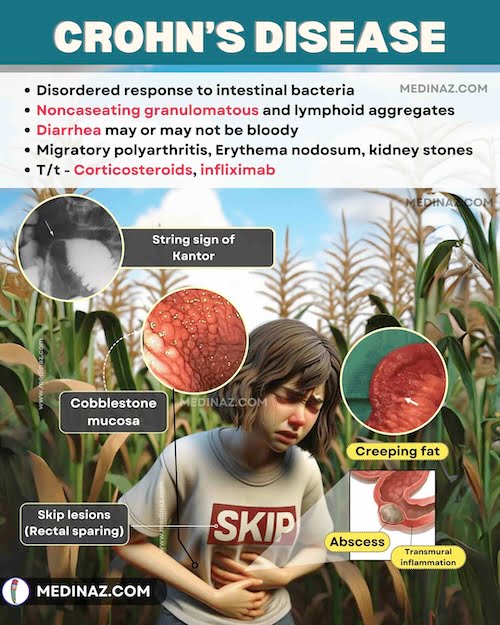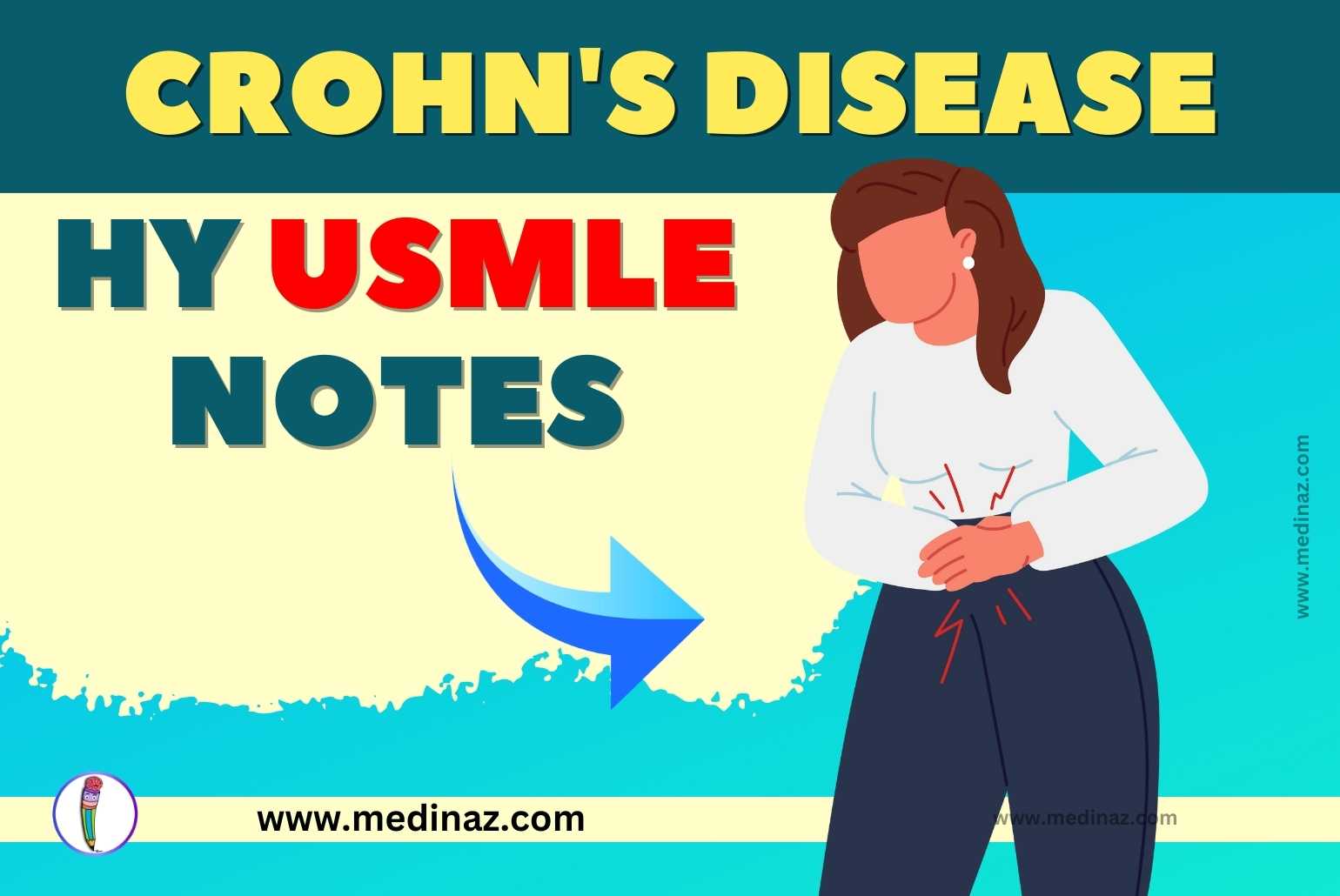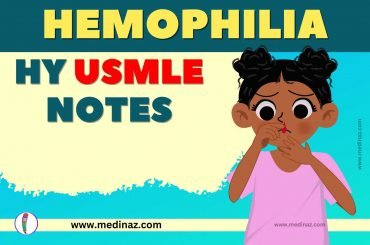Crohn’s Disease USMLE Notes & Mnemonics contains all the high-yield points you need to know.
Definition:
- Crohn’s Disease: A chronic inflammatory bowel disease characterized by transmural inflammation, potentially affecting any part of the gastrointestinal tract from mouth to anus.
Epidemiology:
- Peak onset between ages 15-30.
- Higher incidence in developed countries, urban areas, and in people with a family history.
Pathophysiology:
- Etiology: Unknown, but involves genetic, environmental, and immune factors. (Ref)
- Transmural Inflammation: Leads to deep ulcers, fistulas, strictures.
Clinical Features:
- Abdominal Pain: Often right lower quadrant, mimicking appendicitis.
- Diarrhea: Can be bloody.
- Weight Loss
- Perianal Disease: Fistulas, abscesses, fissures.
- Extraintestinal Manifestations: Arthritis, skin lesions (erythema nodosum, pyoderma gangrenosum), uveitis, liver disease.

Diagnosis:
- Colonoscopy with Biopsy: Skip lesions, cobblestone appearance, transmural inflammation.
- Imaging: MRI or CT enterography for small bowel involvement.
- Laboratory Tests: Anemia, increased inflammatory markers (CRP, ESR).
Management:
- Aminosalicylates: For mild disease.
- Corticosteroids: For acute flares.
- Immunomodulators: Azathioprine, 6-mercaptopurine.
- Biologics: Anti-TNF agents (infliximab, adalimumab), integrin receptor antagonists.
- Surgery: For complications (strictures, fistulas, abscesses) or refractory disease.
Complications:
- Intestinal: Strictures, fistulas, abscesses, malabsorption, increased risk of colorectal cancer.
- Extraintestinal: Arthritis, skin, eye, liver involvement.
Mnemonic: “CROHN’S DISEASE”
- Cobblestone mucosa
- Right lower quadrant pain
- Obstipation (due to strictures)
- Hyperactive bowel sounds
- Noncaseating granulomas (biopsy)
- Skip lesions
- Diarrhea
- Ileum (most commonly affected)
- Strictures
- Extraintestinal manifestations
- Abscesses
- Smoking (worsens disease)
- Erythema nodosum, pyoderma gangrenosum
Chart: Crohn’s Disease Key Aspects
| Aspect | Description |
|---|---|
| Affected Area | Any part of GI tract, often terminal ileum |
| Inflammation Pattern | Transmural, skip lesions |
| Symptoms | Abdominal pain, diarrhea, weight loss |
| Diagnosis | Colonoscopy, imaging, labs |
| Treatment | Medications (varied), surgery for complications |
Note: On the USMLE, it’s important to recognize the clinical presentation of Crohn’s disease, understand the typical findings on colonoscopy, and be familiar with the medical and surgical treatment options. The differentiation from ulcerative colitis and the understanding of its systemic nature are also frequently tested topics.
Check other important USMLE Notes
A Visual Learning Platform





